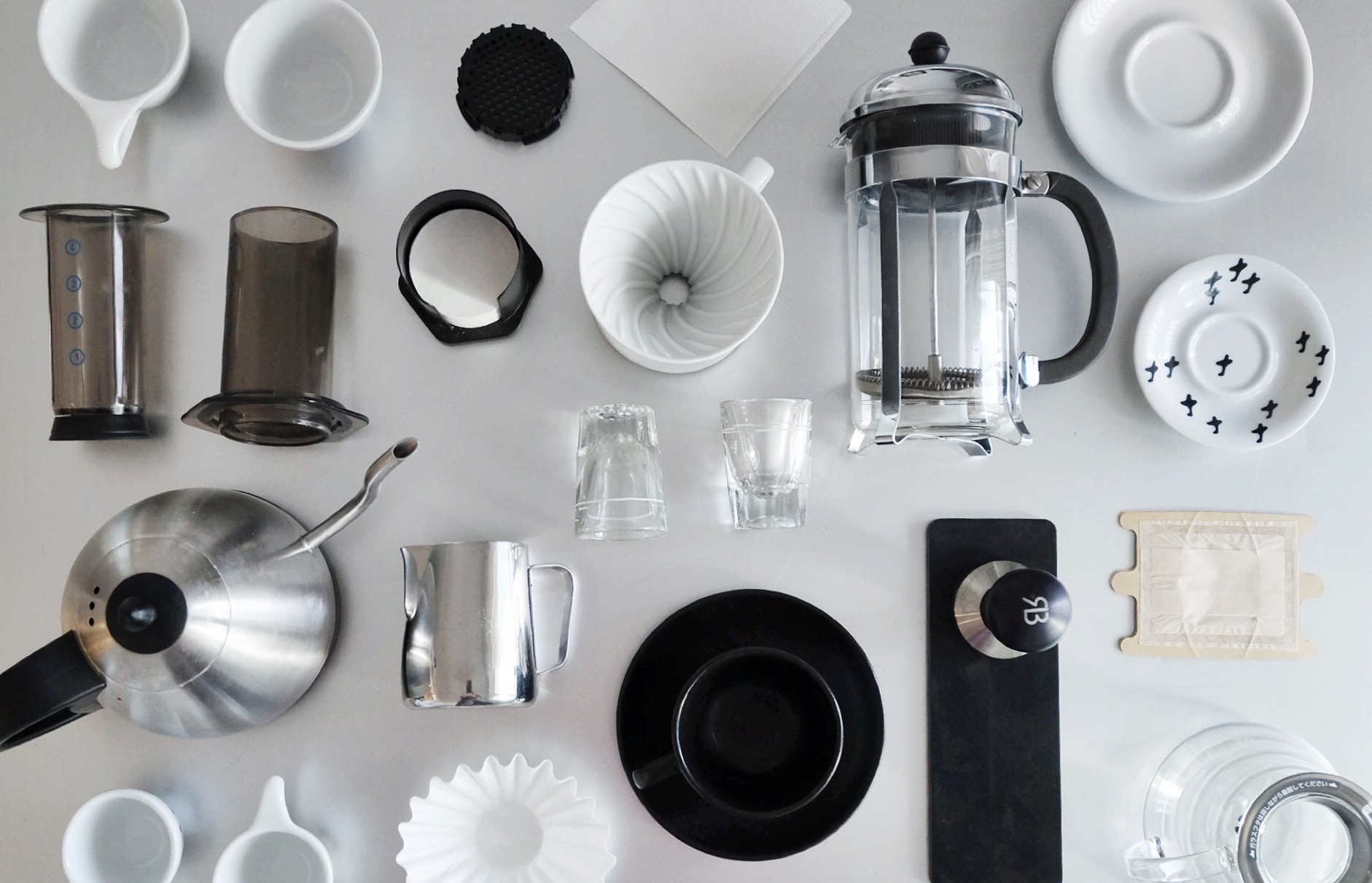How to be a Minimalist Home Barista

Anyone who has spent time in the continually evolving coffee world knows, ideas about the best ways to brew coffee are ever changing. If you drop into a coffee trade show—or even your city's newest coffee shop—it's really easy to get wooed by what is in fashion. However, before getting all wrapped up in the fancy shapes, bright colors and sometimes hollow promises of new products, I think it's important to ask ourselves a few questions about what it is we really need in our home brewing arsenal.
Since I am in the process of paring down my overstuffed cupboard of coffee equipment, I am going to share a few Minimalist tips with you that I am currently utilizing. Perhaps these will help you eliminate the unnecessary so you can focus on the essential and get brewing!
1. Know Yourself & Your LifeStyle.
This is the first, and perhaps the most important tenet of being a minimalist home coffee brewer. Knowing yourself, or at least understanding your lifestyle, is the foundation for every other tip I share with you.
Do you travel a lot? If so, perhaps an Aeropress paired with a Porlex Hand Grinder would be a good kit. Are you averse to plastic? That rules out the Aeropress. How much are you willing to spend on coffee equipment? Roughly 7k will get you a La Marzocco GS3 Espresso Machine, but you will also need a complimentary grinder, tamper, cleaning kit, etc. So you need to factor in those other costs. Do you like taking care of machinery? If not, it's probably best to steer clear of an espresso machine. How much time on average to you like to spend making a cup of coffee? If it's not that much, you can go ahead and scratch the hand grinder off of your shopping list.
These are very basic ideas, but I think you get the point. A little self reflection will help you understand what coffee equipment is realistic and complimentary to your lifestyle. It's all very personal.
2. Do Your Research.
Once you have clear idea about your lifestyle, spend a little time understanding what your options are. Sometimes we end up with too much coffee stuff simply because we didn't have a good understanding of what was out there to begin with. The ol' google is obviously great for finding coffee ideas and understanding your options. It's also worth chatting to folks that might have more experience than you. You can ask the baristas at your local shop how they like to brew at home, and why. If you are more of an introvert, asking a coffee professional you respect via social media is a solid option, too. I actually really enjoy reading reviews from the Coffee Geek or watching Seattle Coffee Gear's videos when I'm looking for a little more practical understanding of the equipment I am interested in buying.
3. Borrow from a Friend.
If you are blessed to have other coffee lovers in your life, chances are they have coffee stuff they would be willing to let you try out. You could even arrange a swap with them. The idea is, you can try their Kalita Wave, while they experiment with your Hario V60. Taking equipment for a test run is an easy way to know if you'd like to add it to your permanent collection. Just remember to respect what you borrow and return it in a timely fashion.
4. Avoid Coffee Brewing Gimmicks.
No industry is immune to sellers of snake oil. If a product makes a claim to reinvent the coffee brewing wheel, it might be a good idea to steer clear. Or at the very least, wait until people you respect in the coffee industry have given the product their (un-sponsored) vouch. Everyone knows not to download Apple's new software as soon as it's released. Right?!
5. When You Purchase a New Piece of Coffee Gear, Let Something Else Go.
This is a classic one-for-one minimalist principle that focuses on maintaining the size of your collection. Every time you bring a new piece of coffee gear into your home, get rid of something you already have. Chances are there is probably something unnecessary collecting dust in the back of your cupboard. If you haven't used it in 6 months, it's probably time to accept that you aren't going to use it again. The idea of "someday I'll brew with this beauty" typically translates into never. Donate the piece to someone who would appreciate it, or sell it and move on.
The less coffee stuff you have, the less stuff you have to feel guilty about not using. The less you have to take care of.
6. If you could only have 5 Pieces of Coffee Brewing Equipment on a desert Island, What would they Be?
In other words, ask yourself, what is it that you really need? Basically, I hope this question encourages you to go a little deeper into suggestion #1 of knowing yourself. Really take the time to consider what the essential tools are for you to brew coffee at home. Hint, you only have two hands, so you probably don't need six kettles. It's a really simple idea, but I truly believe pairing down our coffee collections in this way can have a profound impact on the quality of our lives (less clutter = more focus) and gives us more space to focus attention on perfecting the kind of coffee brewing we love to do at home.
Here are a few of my favorite Minimalist resources:
Zen Habits by Leo Babuta
The Life Changing Magic of Tidying Up by Marie Kondo
Becoming Minimalist by Joshua Becker



